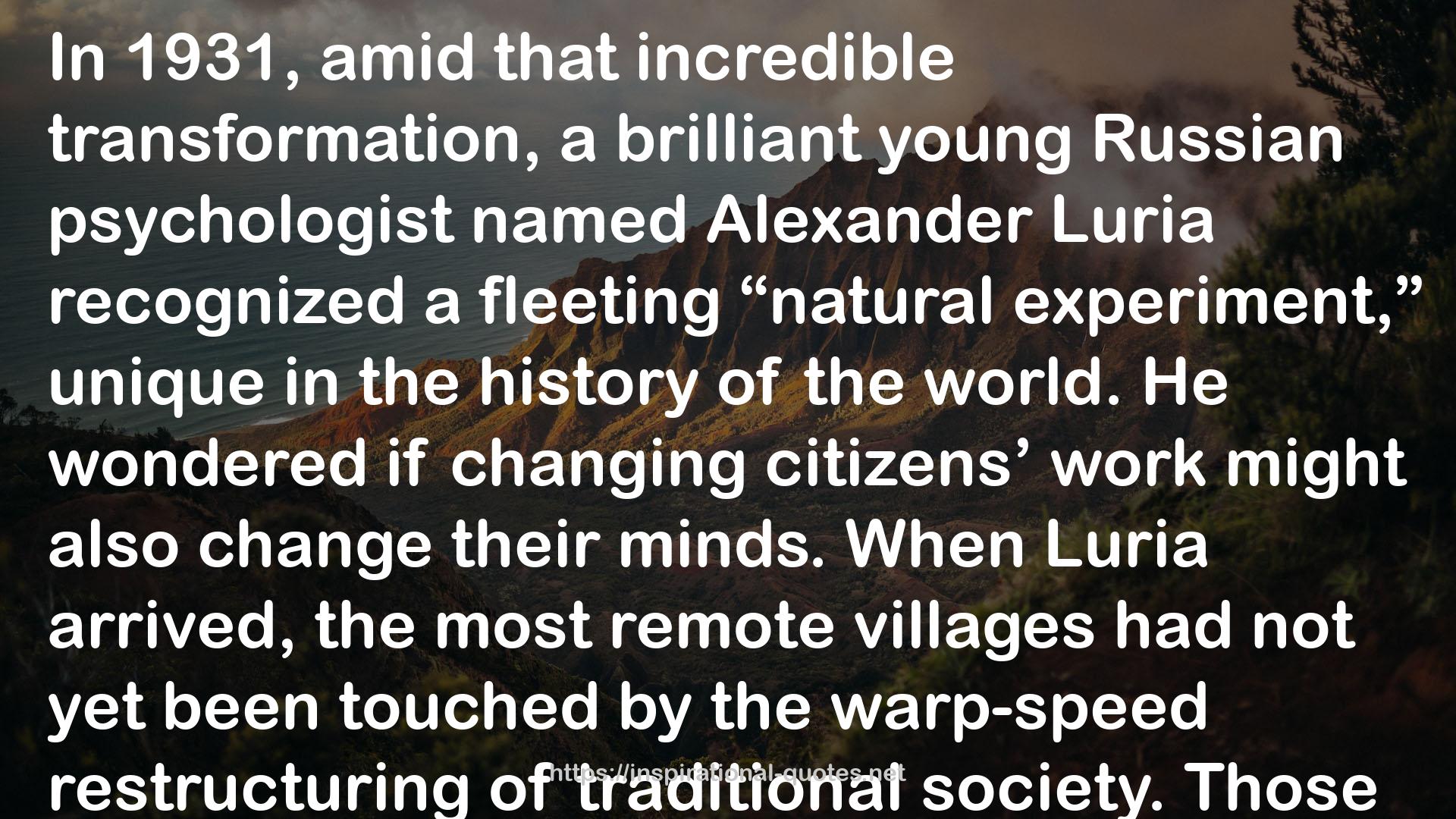" In 1931, amid that incredible transformation, a brilliant young Russian psychologist named Alexander Luria recognized a fleeting “natural experiment,” unique in the history of the world. He wondered if changing citizens’ work might also change their minds. When Luria arrived, the most remote villages had not yet been touched by the warp-speed restructuring of traditional society. Those villages gave him a control group. He learned the local language and brought fellow psychologists to engage villagers in relaxed social situations—teahouses or pastures—and discuss questions or tasks designed to discern their habits of mind. Some were very simple: present skeins of wool or silk in an array of hues and ask participants to describe them. The collective farmers and farm leaders, as well as the female students, easily picked out blue, red, and yellow, sometimes with variations, like dark blue or light yellow. The most remote villagers, who were still “premodern,” gave more diversified descriptions: cotton in bloom, decayed teeth, a lot of water, sky, pistachio. Then they were asked to sort the skeins into groups. The collective farmers, and young people with even a little formal education, did so easily, naturally forming color groups. Even when they did not know the name of a particular color, they had little trouble putting together darker and lighter shades of the same one. The remote villagers, on the other hand, refused, even those whose work was embroidery. “It can’t be done,” they said, or, “None of them are the same, you can’t put them together.” When prodded vigorously, and only if they were allowed to make many small groups, some relented and created sets that were apparently random. A few others appeared to sort the skeins according to color saturation, without regard to the color. Geometric shapes followed suit. The greater the dose of modernity, the more likely an individual grasped the abstract concept of “shapes” and made groups of triangles, rectangles, and circles, even if they had no formal education and did not know the shapes’ names. The remote villagers, meanwhile, saw nothing alike in a square drawn with solid lines and the same exact square drawn with dotted lines. To Alieva, a twenty-six-year-old remote villager, the solid-line square was obviously a map, and the dotted-line square was a watch. “How can a map and a watch be put together?” she asked, incredulous. Khamid, a twenty-four-year-old remote villager, insisted that filled and unfilled circles could not go together because one was a coin and the other a moon. "
― David Epstein , Range: Why Generalists Triumph in a Specialized World
